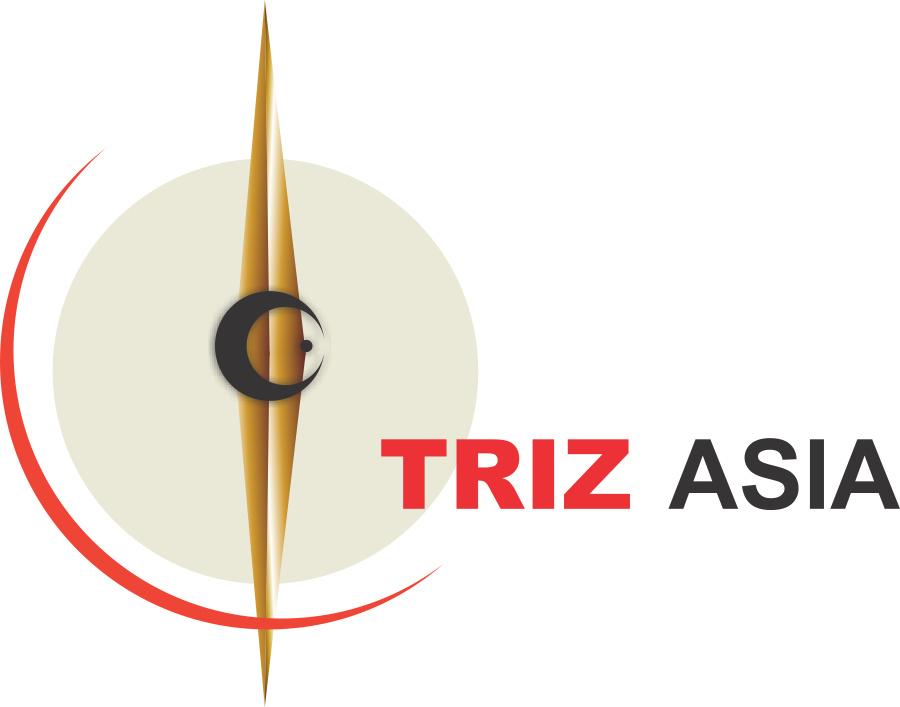Our Approach
At the heart of GEN TRIZ’s innovation expertise lies a deliberate and rigorous methodology. For over 20 years, our innovation experts have continued to enhance and adapt the methodology to respond to the changing needs of the market. GEN TRIZ’s methodology is a framework comprised of a collection of analytical and problem-solving tools.
Key Principles

We define innovation as a significant improvement in at least one Main Parameter of Value (MPV) – those factors that drive customer purchasing decisions. GEN TRIZ is uniquely adept at uncovering MPV’s and translating them to underlying technical parameters that…

We believe that products and technologies evolve according to evolutionary trends that are objective and predictable. Markets and technologies are dynamic; therefore, innovation programs cannot be static. Understanding where a technology is on its S-curve is critical to determining the…

At the foundation of our methodology is a functional approach. By modeling a product or process in functional terms and then developing a superior functional architecture, our unique functional lens reveals powerful insights critical to delivering innovation solutions. Our functional…

One of the cornerstones of our methodology is determining the right problem to be solved, which often may not be the initially stated problem.

We use our functional approach to guide Function-Oriented Search, a structured means to identify technologies in potentially distant industries or areas of science and engineering that have functionally similar challenges. With this approach, GEN TRIZ is able to change the…
Woven into GEN TRIZ’s methodology are strong links to TRIZ, a scientifically based and empirically derived approach for solving engineering problems at the level of powerful innovative concepts and inventions. GEN TRIZ scientists and engineers have incorporated the fundamentals of TRIZ into its innovation methodology, which is continually refined to best meet the needs of an evolving marketplace.
What Are Main Parameters Of Value (MPV’S) ?
MPV’s are the critical features and functionality that differentiate products and drive customer purchasing decisions.
Why are they important?
GEN TRIZ relies on MPV’s as an important vehicle for ensuring a clear line of sight to the market and profitability. Without this line of sight, even the most elegant technical solutions risk yielding only limited economic value. A disciplined focus on MPV’s helps ensure that scarce R&D innovation resources are focused exclusively on improving the things that matter most to customers, as opposed to improving all product features.
1.It is important to distinguish between what customers say they want and what they are actually willing to pay for. Understanding this distinction is critical when allocating R&D investment funding.
2.Customers cannot ask for features that they are unaware of (You don’t know, what you don’t know).
3.Customers may not ask for features that they do not believe are technically feasible.
To address the second and third issues, we deploy a tool called Voice of the Product (or Voice of Technology), a complementary approach to VOC aimed at surfacing unmet customer needs. By “interviewing” the product with the aid of a number of analytical tools, the goal is to uncover unmet needs that can be exploited through innovation and offer the potential to capture market share, drive growth, and boost the bottom line.
What do we do with MPV’s?
Of course, uncovering MPV’s is only one step on the pathway to success. Once MPV’s are surfaced and validated with the client, GEN TRIZ is well skilled at translating these needs into the functions responsible for driving performance. And, by analytically determining the underlying physical parameters that can constrain performance, we are then well positioned to begin applying problem-solving tools that can lead to breakthrough ideas.
Read about our other core innovation processes and guiding principles.
Technology Trends
Technologies and products tend to evolve along an S-curve pattern with a slow growth early stage, followed by rapid growth to maturity, and then transitioning to slow and ultimately declining growth in late stages. GEN TRIZ deploys a tool called Trends of Engineering System Evolution (TESE) that considers how technologies evolve based on objective evolutionary trends that have been observed over time across a wide range of technologies and products.
Where is my technology today?
Understanding where a particular technology lies on this S-curve continuum can have important implications on technology strategy development and innovation investment. Our methodology includes strategic tools for understanding the positioning of products and technologies in order to answer questions like:
- Where are we today on the S-curve?
- What is the development potential under the current action principle? (In other words, what resource levels are available to be exploited through incremental innovation?)
- When should we consider jumping to the next S-Curve in order to disrupt this market and secure future competitive advantage?
What might the future look like?
Even with a solid understanding of current positioning and competitive aspirations, it can still be a challenge to surface the breakthrough ideas that will enable future strategic advantage. To this end, GEN TRIZ’s methodology includes tactical tools that derive from a framework of objective technology trends to help address questions like:
- What innovations will drive movement along the S-curve (increasing product performance and maximizing profitability)?
- What might the general trends imply about the evolution of our specific engineering system?
- How can we anticipate technological advancement and exploit these evolutionary developments to our competitive advantage?
- What are the technologies that could force a jump to the next S-curve? How might this jump make current solutions obsolete?
Trends of Engineering System Evolution can be a powerful vehicle for long-term technology forecasting, strategy development, and product innovation.
Read about our other core innovation processes and guiding principles.
Functional Lens
At the foundation of GEN TRIZ’s methodology lies a functional approach to defining any engineering system – which could be either a product or a manufacturing process.
What is a function?
A function is an action performed by one material object to change or maintain a parameter of another material object – to push, to block, to move, to hold, etc. By depicting a system in functional terms, it is possible to translate customer parameters into their underlying physical parameters, which become the targets for technical innovation.
Systems operate for the sake of performing functions. Components in an existing system are specific “solutions” to the underlying functional requirements. Therefore, to improve a system (and find superior solutions to achieve the same function), our approach focuses on the original functional need, rather than the components. This focus on functions broadens the potential solution set.
Why are functions important?
Our functional approach to problem definition is important along two dimensions:
- By depicting a system in functional terms, it provides an objective basis for identifying deficiencies in the current system. These deficiencies help to illuminate the underlying key problems that are critical to solve. They can be expressed in terms of harmful functions to eliminate, contradictions to resolve, or even useful, but inadequate functions to be improved. Alternatively, function modeling can be used to depict a superior functional architecture, thus creating new problems to be solved.
- Using functional indexing to express key problems provides a roadmap for navigating the external world of global knowledge for potential solutions and enabling technologies. This is possible because functions are universal across industries. As a result, functions become the means for reaching beyond the domain of the client’s business and technical expertise.
Where can functions lead us?
But how do functions lead us to potential solutions that lie beyond the client’s domain? Using a tool called Function-Oriented Search, we are able to identify industries or fields of science and engineering that have successfully dealt with functionally similar challenges.
Read about our other core innovation processes and guiding principles.
Key Problems
Clients regularly express frustration over a critical concern in the innovation process: How can we be sure we are solving the right problem? And, when facing the pressures of producing results in a time-compressed competitive environment, this concern can be particularly problematic.
It has been stated that Albert Einstein once said, “If I had one hour to save the world, I would spend fifty-five minutes defining the problem, and only five minutes finding the solution.” The logic behind this idea is consistent with GEN TRIZ’s approach to innovation, in that on the critical path of any engagement is to define the key problems to be solved.
GEN TRIZ’s methodology pays particular attention to accurate problem identification, typically following one of two analytical methods: either deriving root causes or redefining the problem.
Root Cause
At the outset of most projects, we deploy a number of analytical tools aimed at surfacing deeply rooted problems in the client’s product or process that can be directly tied to the initial innovation challenge. Tools such as Function Analysis, Flow Analysis, and Cause-Effect Chains Analysis are all aimed at uncovering the key problems that must be solved.
Redefining the Problem
An alternative approach is to redefine the problem by constructing new problems to solve that did not previously exist. For example, by eliminating a problematic component (through a tool known as Trimming), a new problem will have been created – How to achieve the functions of the component, but without the component itself? By creating new problems to solve, the original problem can be eliminated and the door is opened to solutions that previously could not have been imagined.
Read about our other core innovation processes and guiding principles.
Adapt Existing Solutions, Don’t Always Invent
One way to reduce risk is to leverage solutions that already have been deployed successfully elsewhere. Sometimes breakthrough results demand inventive solutions. Sometimes, however, success can be achieved more efficiently by borrowing ideas from others and creatively deploying these ideas in new systems and applications.
GEN TRIZ’s Function-Oriented Search is a problem-solving tool that uses functional criteria to help identify existing technologies in leading areas of science and engineering. To successfully apply the tool, we begin by identifying the functions in the system that need to be improved. These specific functions are then translated into generalized functions that will become the targets of an external search.
But, where should we look?
The focus of Function-Oriented Search is on relevant industries or knowledge domains that face functionally similar challenges to the client’s system. Typically, the most rewarding domains to explore are those industries where:
- The function is absolutely critical to the survival of the industry, and/or
- The function is subjected to much harsher conditions and requirements than in the client’s system.
Under these conditions, there is a greater likelihood that investment already has been focused on solving this functional challenge.
What’s next?
Typically, Function-Oriented Search produces a range of potential solutions, each with its own set of adaptation challenges. By stratifying solutions along two dimensions – potential efficacy of the technology and degree of difficulty to implement (time and resources) – we illuminate the choices available to the client in a way that facilitates decision making. Subsequent work is then focused on proof-of-principle activities that are mostly built around solving adaptation challenges.
And, the benefits?
Successfully deploying Function-Oriented Search enables the client to reach far outside its industry to identify enabling technologies that could be critical for unlocking breakthrough innovation. Further, it brings a double benefit of both increasing speed to market and lowering risk, as the technologies have already proven successful in other applications.
Read about our other core innovation processes and guiding principles.


